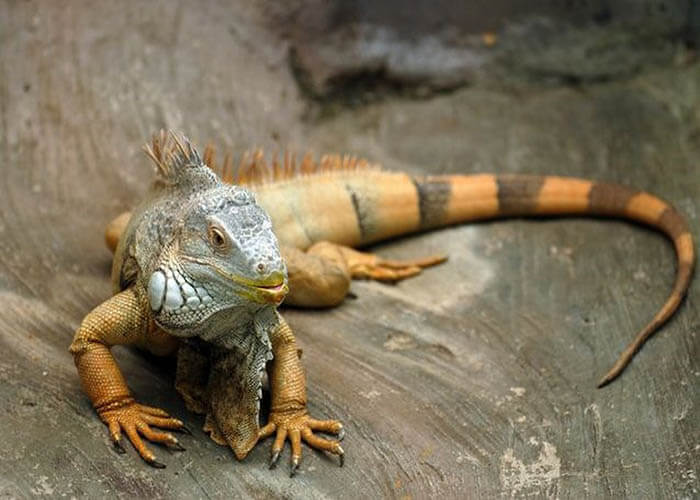Introduction
When talking about bringing pets abroad for travel or relocation, most people think of cats and dogs – the most common domestic animals worldwide. However, in reality, many pet lovers share their homes with more unusual companions such as rabbits, hamsters, guinea pigs, birds, reptiles, or even hedgehogs. These animals are known as “uncommon pets.” The question is: Are these less common pets allowed to enter different countries around the world? This article provides a detailed overview of the regulations and the list of countries that allow uncommon pets.
What Are Uncommon Pets?

Uncommon pets generally refer to animals outside the dog and cat categories, which are internationally recognized as pets. These may include:
- Rabbits, hamsters, guinea pigs, ferrets.
- Birds: parrots, canaries, cockatiels, finches.
- Reptiles: turtles, non-venomous snakes, lizards, geckos.
- Amphibians: frogs, salamanders.
- Exotic pets like hedgehogs, squirrels, or fennec foxes (depending on local laws).
The allowance for entry depends on each country’s animal health, quarantine, and wildlife conservation laws.
General Rules for Importing Uncommon Pets
Unlike cats and dogs, which often follow standardized entry requirements (rabies vaccination, microchip, health certificates), uncommon pets face a more fragmented regulatory environment. Each country sets its own laws based on:
- Disease prevention: Protecting humans and local animals from zoonotic diseases.
- Biodiversity conservation: Preventing invasive species from threatening native ecosystems.
- Animal welfare considerations: Some animals are restricted for ethical reasons or to protect endangered species.
Europe – Entry Rules for Uncommon Pets
Europe tends to be more flexible compared to other regions, but rules differ from one country to another.
- United Kingdom: Rabbits, rodents, birds, and reptiles are permitted with veterinary health certificates and CITES permits if the species is protected.
- Germany: Allows many uncommon pets with valid veterinary documents, but bans primates, foxes, and certain wild animals.
- France: Accepts rabbits, birds, hedgehogs, and reptiles, provided they have a health certificate and customs declaration.
- Italy, Spain, Netherlands: Similar regulations apply, often limiting the number of birds per traveler.
North & South America

- United States: Regulations depend on USDA, CDC, and Fish & Wildlife Services. Birds require a 30-day quarantine. Rabbits and rodents are generally allowed with health certificates. Reptiles may require special permits.
- Canada: Welcomes rabbits and small rodents. Birds need health checks, and certain reptiles are banned.
- Brazil, Argentina: Require International Veterinary Certificates (CVI). Birds and reptiles may need wildlife permits.
Asia
- Japan: Very strict, especially for birds (minimum 21-day quarantine). Small reptiles are permitted if not on the banned list.
- South Korea: Rabbits, rodents, birds, and turtles are allowed with veterinary certificates. CITES permits required for certain species.
- Singapore: One of the strictest countries; only a few uncommon pets are permitted. Most reptiles and amphibians are banned.
- Thailand: Allows rabbits, rodents, and birds, but quarantine procedures apply.
- Vietnam: Requires quarantine clearance. CITES-listed species are prohibited.
Middle East
- UAE (Dubai, Abu Dhabi): Allows some uncommon pets with strict documentation. Many reptiles and exotic birds are banned. Rabbits and rodents are easier to import.
- Qatar, Kuwait: Similar to UAE, requiring veterinary health certificates and CITES permits.
Africa
- South Africa: Permits rabbits and some birds under strict veterinary controls. CITES permits may be required.
- Other African nations: Tend to restrict uncommon pets due to ecological protection concerns.
Australia and New Zealand – The Strictest Regions

- Australia: Extremely restrictive; most uncommon pets are prohibited. Only a limited number of rabbits and birds are allowed with special permits.
- New Zealand: Almost total ban on exotic pets. Only cats and dogs are permitted under strict quarantine.
Key Tips When Importing Uncommon Pets
- Research destination country laws thoroughly.
- Check CITES listings. Endangered species require international permits.
- Obtain a veterinary health certificate. Mandatory in most cases.
- Declare at customs. Non-declaration may result in confiscation.
- Use IATA-approved carriers. Ensures safety during transport.
Easiest Pets to Import
- Rabbits.
- Hamsters, guinea pigs.
- Common bird species (parrots, canaries).
- Small turtles.
Commonly Restricted or Banned Pets
- Dangerous reptiles (snakes, crocodiles, monitor lizards).
- Amphibians (frogs, salamanders).
- CITES-protected wildlife.
- Primates (monkeys, apes).
Conclusion
Traveling or relocating with uncommon pets requires much more preparation than with cats or dogs. Each country has its own laws, ranging from lenient to highly restrictive. To ensure a smooth journey, pet owners must prepare all necessary health documents, obtain CITES permits if applicable, and confirm requirements with the local embassy or veterinary authority before departure.
FAQ – Frequently Asked Questions
1. Can I bring my hamster to the USA?
Yes, but you will need a veterinary health certificate.
2. Do pet birds require quarantine in Europe?
Some EU countries require a 21–30 day quarantine for birds to prevent avian flu.
3. Can I bring a pet turtle into Australia?
No, Australia prohibits most reptiles.
4. What if my pet is a CITES-listed species?
You must obtain both export and import permits from the relevant authorities.
5. Which regions are most pet-friendly for uncommon pets?
European countries such as Germany, France, and Spain are generally more permissive but still require documentation.
This guide provides a comprehensive overview of which countries allow uncommon pets to enter, helping owners plan ahead and travel safely with their special companions.
Read more:
Is It Safe to Sleep with Dogs and Cats?
Suggestions for Luggage When Traveling Abroad with Pets

